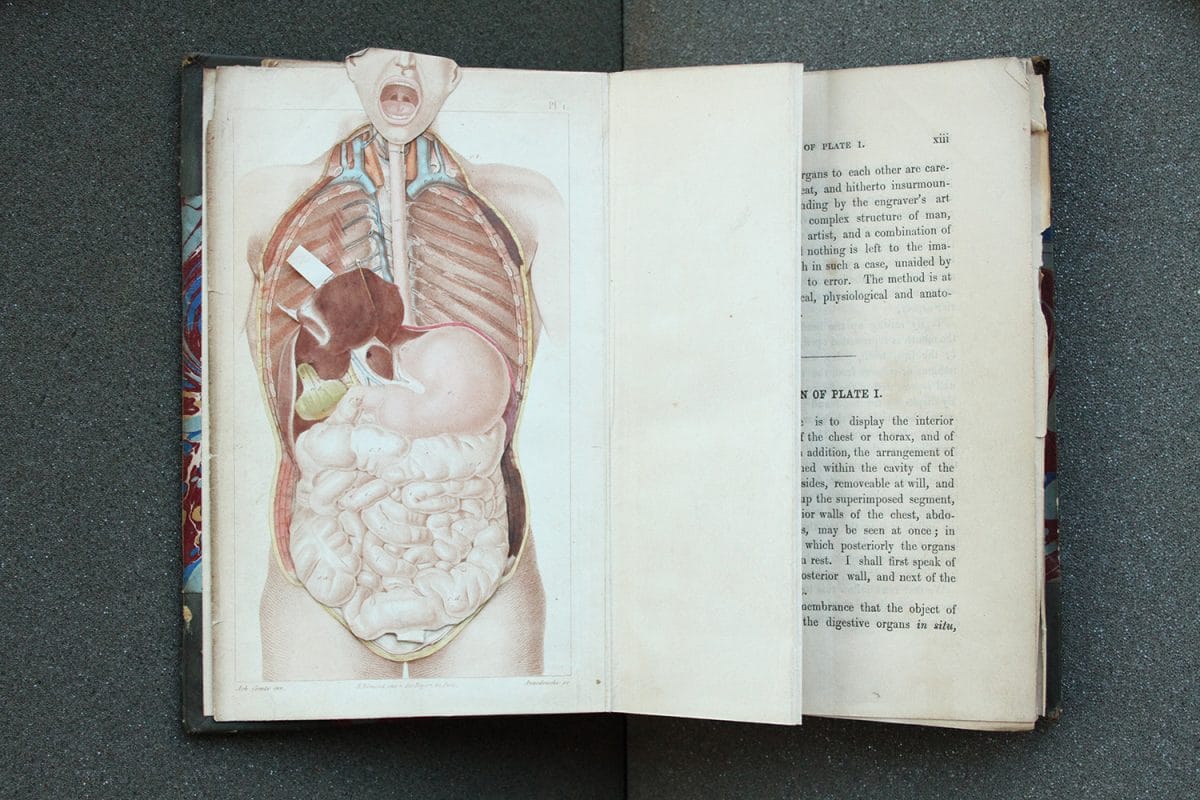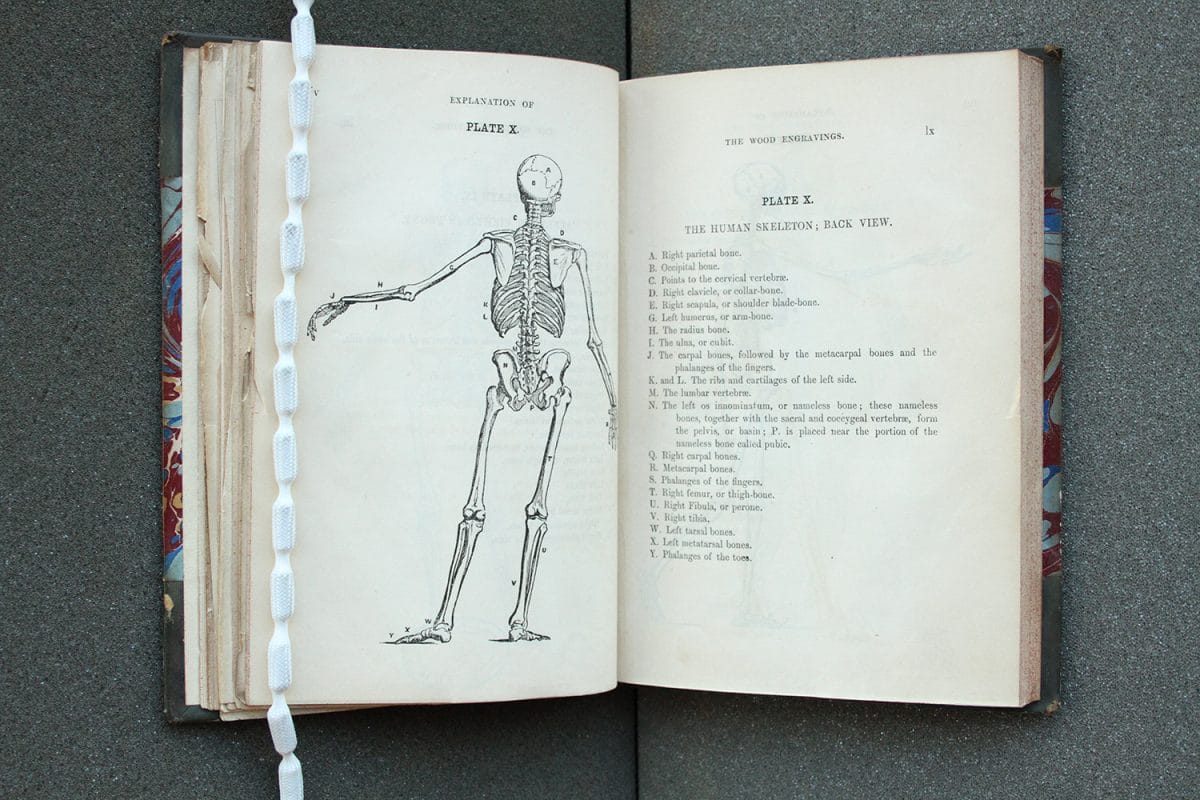Once owned by Frederick Horniman himself, ‘Man: His Structure and Physiology’ was written by Robert Knox, a Scottish surgeon best known for his use of bodies from the infamous Burke and Hare murders.
Although he was never prosecuted for his involvement in the crimes, Knox found himself understandably unpopular in Edinburgh. In 1842, after the death of his wife, he made the decision to move to London where he became a science journalist and published several works, including this one.
Knox illustrated his work not only with black and white diagrams, but with intricately detailed colour illustrations.
Many 19th century medical texts feature similar images, but this volume from our library is quite special. The book’s frontipiece proudly declares it includes ‘eight moveable dissected coloured plates’.
Each of the coloured illustrations folds out to reveal more details of human anatomy.
Some have several layers to be revealed.
Knox also address some smaller parts of the human body with as much detail.
‘Man: His Structure and Physiology’ covers every part of the human body, with the exception of genetalia.
Despite his influential early career, Knox’s reputation never recovered. Although he continued to publish works on human anatomy, he found it impossible to work as a surgeon, and his books about fishing sold best.





